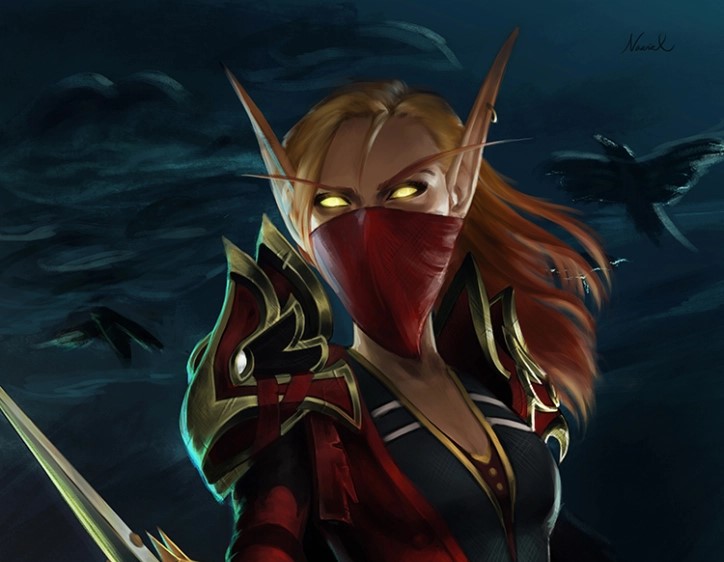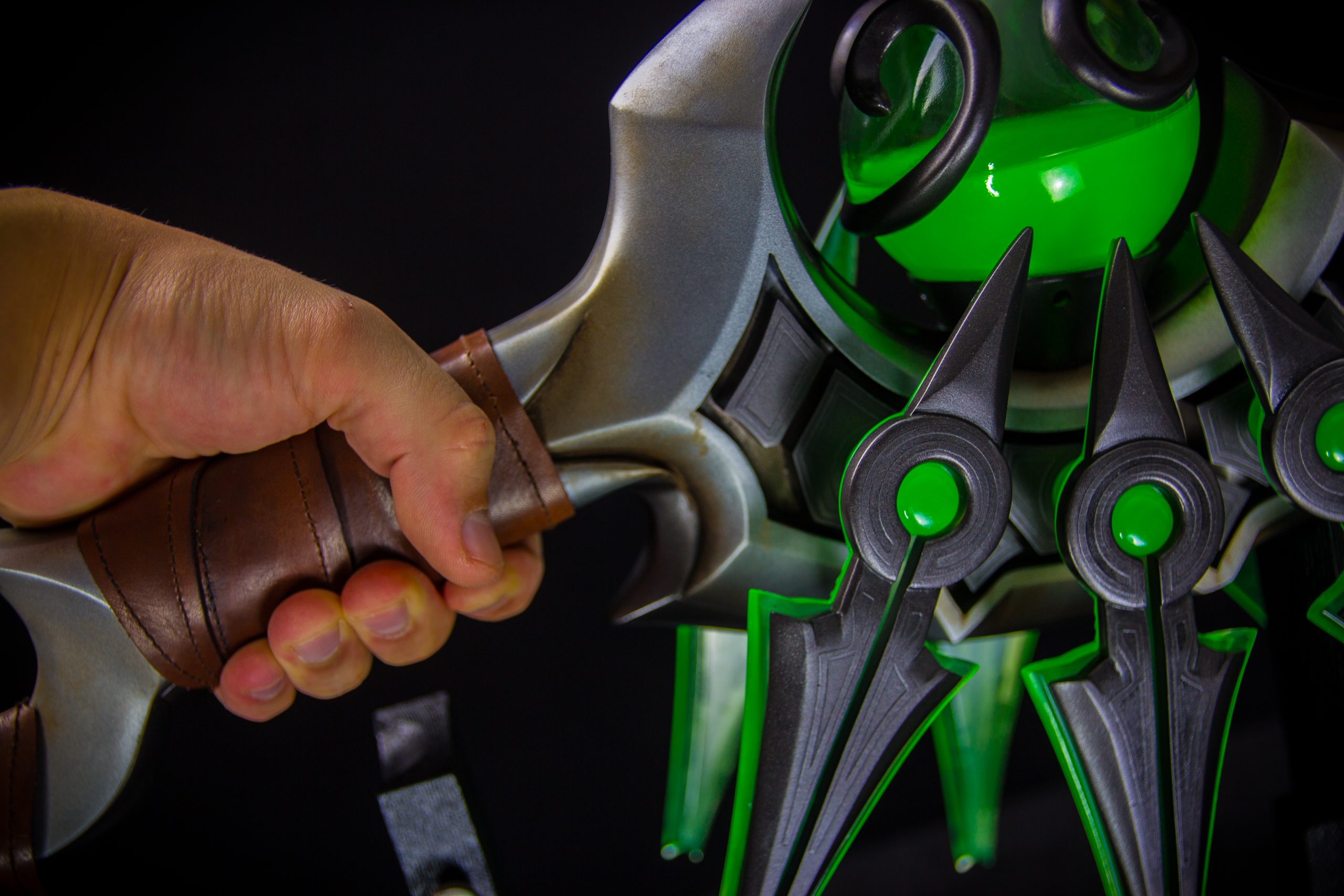There has been a lot of talk among inner circles of the elite about how fragile theorycrafting is in Warcraft. To put it bluntly, nowadays most classes only have a handful of people doing the vast majority – we’re talking on the order of 95-100% here – of the top level theorycrafting. Now that Pathal has backed down as lead ShadowCraft developer, rogues fall into this category with only two people actively working on ShadowCraft and with few others answering important questions. While every class still currently has access to high level theorycrafting that will tell them how to play, World of Warcraft may be one accident away from being without a major theorycrafting powerhouse backing each one of its classes. I don’t know about any of you, but as a casual theorycrafter and someone who feels compelled to do things right or not at all, that’s scary. Right now if the primary ShadowCraft developer decided to quit, individuals including myself would have to decide between our free time and ShadowCraft. Perhaps the situation isn’t as dire as I make it out to be and that this is just a temporary lull, but either way the questions that this topic raises are real and important. In this post I am going to go over some of the ways that theorycrafting – that is, the application of mathematics to World of Warcraft in order to make educated suggestions for optimal strategies – has affected the game. Many of these will be good, however some will have downsides that I encourage everyone to consider. By the end of this article it is my hope that you legitimately question the role theorycrafting plays in the game.
Indalamar – Nerfing All for One
Indalamar was of WoW’s original theorycrafters. Sorta. As this article will tell you, back when Warcraft was still in Beta Warriors were even bigger panzies than they are now. Specifically, they complained a lot about being underpowered. Enter Indalamar, who said that they were not underpowered but in fact overpowered. Indalamar created a video to illustrate their point and the next patch warriors were nerfed. If you think this might be a coincidence, then the article I linked also points out that the player behind the video got hired by Blizzard.
Now let’s think of the ramifications. Most people back in those days were terrible at the game. I myself when I started had no idea what the stats did and so picked whatever had the most armor until some time in Burning Crusade. It’s clear that the warrior kill rate (which in a world of farming was more relevant than sheer DPS) was too high and that a nerf was needed. However, the hordes of warriors calling for buffs indicates that to the unskilled, warriors quite possibly were underpowered. In other words it would seem that by spreading the word that warriors were strong, Indalamar may have inadvertently caused Blizzard to kick many fellow player while they were down. On the plus side, the video did get widely circulated and there is no doubt many warriors learned a great deal from the video and became among the elite warrior farmers.
Elitist Jerks – May Aldriana Smile Upon me as I Invoke His Name
Modern theorycrafting started in Wrath of the Lich King when raiding and the math that accompanied it were opened up to more casual audiences. Sites like ElitistJerks became essential to raiders as it was no longer acceptable to have not read up on your class. Even WorldOfLogs — the first widely used logging site — started during Wrath, allowing players to compare themselves to others across the world. This was the time when theorycrafters largely stopped using spreadsheets, favoring programs which would model or simulate the increasingly complex rotations Blizzard asked us to perform.
This period of theorycrafting history was immensely important and I could never hope to list all of the noteworthy things that came of it. That said, I’ll try anyway. First off, it popularized WoW theorycrafting. Aldriana, premier rogue theorycrafter and original designer of ShadowCraft, was easily the biggest PvE rogue name at the time. This led people like me to get involved in the WoW community, writing guides or trying to contribute in their own way to the burgeoning community based around ElitistJerks. It also meant that people who were struggling with their DPS had a clear path to self-improvement – just go to EJ, read some guides, and practice a rotation that is almost certainly going to be within 5-10% of the optimal one – and at the very least is the one that the pros use. While there were certainly people who were bad and left in the dust (I to remember a certain Combat rogue I was with in a dungeon using Shiv as a primary CP generator), this number was far lower than it had been at any previous time in WoW’s history.
Just as players became better, so too did their expectations of others. No longer could I run into a difficult dungeon as a armor-wearing Subtlety rogue and expect for people to be cool with it. No, the community suddenly cared about what spec their group members were and whether or not their build was viable. They also cared about things like item level (gearscore) and would deny players entry into raids solely on that basis. The focus on optimal behavior had another downside, which was the encouragement of cookie-cutter talent builds (remember that talents and specializations were one in the same until Cata). While there had always been cookie-cutter builds, the shift in the culture made not having one of those builds a reason for people to harass or deny entry into groups. While this was not a huge problem for those who had done their research and wanted to play what the guides said was optimal, for those who wanted to stray from the path or simply were not as well-learned it caused a great deal of pain.
Legacy – Power in Numbers
The theorycrafting community has had an extremely strong impact on modern WoW. The example that comes to mind most readily is how me and my fellow rogues dealt with the prospect of nHemo weaving during Warlords Beta. For those of you who aren’t familiar, nHemo weaving was a rotation that involved using Hemorrhage anywhere from 3-7 times consecutively in order to apply a large bleed debuff (Blizzard was testing out ways of making Hemo spammable without losing damage) and then switching to Backstab. Initial tests showed that this might be optimal, however the number of Hemorrhages to weave was highly variable. Not only did it depend on your stats, but since the idea was to get a large DoT getting lucky with crits meant that you could switch to Backstab immediately, whereas getting unlucky could make you need to weave even more Hemorrhages than previously expected. In short the whole thing was a mess and the only way to do the Subtlety rotation right was to install an addon that would track numbers and tell you when to use what generator, at which point the rotation was suddenly trivialized. Although nobody had created such an addon, I made it very clear that if this change went live I would design it, and soon enough the mechanic was changed to what we see today.
This is what I see as one of the largest and longest lasting effects of theorycrafting in Warcraft. For better or for worse, my theorycraft changed the game. Despite finding that I really enjoyed nHemo weaving, I have no regrets. If it comes down to a choice between having everyone play a rotation that I think is fun and having everyone play a rotation that I think is optimal, I will choose the optimal rotation every time. Still, I have to wonder: What if I had let the mechanic go live? If I and the other rogue theorycrafters refused to make an addon and just said “weave hemo 4 times before using Backstab”? Would Subtlety rogues be any worse for wear, or would we just be balanced around 4Hemo weaving? It’s hard to say, and again it’s against my nature in this game to strive for anything but perfection when it comes to my spec. Still though, if WoD beta is any indication, I think it’s fair to say modern theorycrafting has had a huge influence on the game.
Wrapping it Up – Some Wild Speculation
If you made it this far I commend you because I have no idea what I wrote but I assume it reflects the fact that I am running on only two and a half hours of sleep. There’s no way I came close to documenting every way theorycrafting has impacted the game, and I didn’t even touch on what it has done for people like me. Theorycrafting toes the line between hobby, responsibility, and public service. It’s hard to say why any one person does it, except that it sure isn’t for the recognition or efame. As rewarding as theorycrafting can seem to someone on the outside, recognition and thanks from the people that use a theorycrafter’s work is extremely rare. I barely consider myself a theorycrafter – I’ve only consulted for the S*Crafts and am active in that area even less often than I blog – but on behalf of the theorycrafters I know, please do me a favor: Consider what I wrote. Think about the role theorycrafting plays in your game experience. Not just whether or not you use S*Craft, but also how much you care about having guides that are as accurate as possible and rotations that are solvable without addons. If you decide that all this theorycrafting is worth it, then do one (or two!) of two things. First, thank Pathal and the other theorycrafters who have worked so hard to improve their class. Second, do what you can to help us out. Even if you can’t code and are no good at math, there are plenty of ways you can contribute. If you are looking for a place to start, there’s a mechanics testing thread on the forums with important questions on it. Also, if you decide that you’d like a Warcraft with less intensive theorycrafting, then I’d love to hear your reasoning. Either way I’d love to hear your thoughts on the forums.




